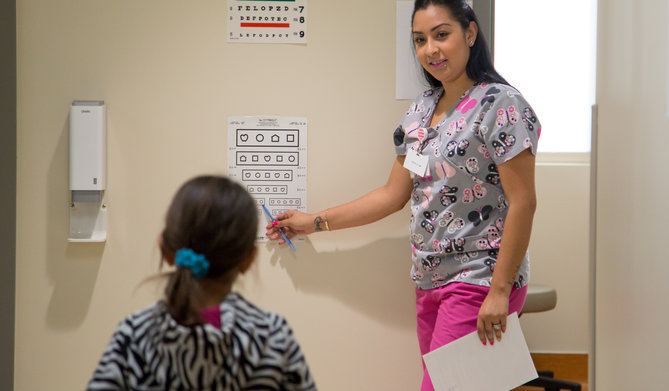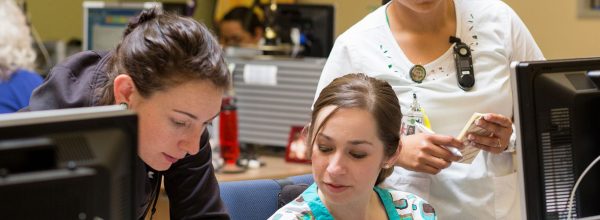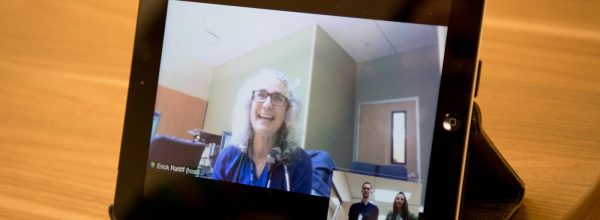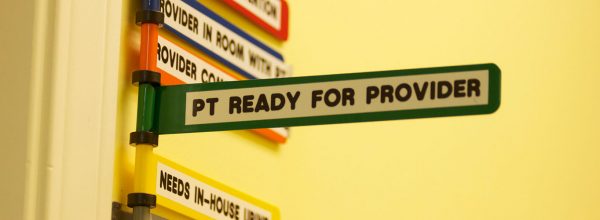Serve the People Community Health Center (STP) in Santa Ana provides comprehensive primary medical care, dental care, vision services and behavioral health to the 133,591 low income residents of Central Santa Ana. The majority of the residents within STP’s service area are Latino, and almost half live below 200% of the Federal Poverty Level. In addition, almost 34% do not have any form of health insurance, mostly due to their inability to secure residency documentation.
The team implemented nurse co-visits, as part of CCI’s 2015-2016 Spreading Innovations program, with the goals of improving patient access to care, improving team-based care, and giving patients more choice in when they are seen. With the addition of an RN to the care team, the team was hoping to improve management of same-day appointments. Because the front office staff cannot triage the patients, the system often breaks down as all of the same day appointments get booked early in the morning and those patients calling later in the day are either booked into an upcoming open appointment slot, told to call back the next day, and/or directed to go to the nearest emergency room. With the addition of an RN, STP could more effectively triage patients to assure that the same-day appointments are more effectively utilized for urgent medical needs.
During its planning phase, the innovation team developed training protocols around the co-visit process. The training focused on patient scheduling, managing the appointment, patient flow, interviewing, documentation and assessment. All clinic staff and care teams have been targeted for training, including all three providers, three medical assistants, one nurse, and two care coordinators. The team also utilized Clínica Family Health Services in Denver, CO as a resource for the RN training curriculum. The Spreading Innovations teams working on co-visit models were invited through the CCI project to attend a site visit in November 2015 at Clínica to learn more about their co-visit model.
Since implementing co-visits, the care team experienced a number of positive changes around patient access. When the project rolled out in January 2016, the provider saw an average of 2.3 patients per hour and by June 2016, provider productivity rate increased to 3.0 patients per hour. By adding a nurse to the care team, the care team was able to add 2 patients per provider per day and create a total of 6 new slots for co-visits per day. Another success has been an increase in their patient show rate: the initial show rate was 69% and this increased to 77% by June 2016. The team also documented a decrease in cycle time from an average of 66 minutes in February 2016 to 52 minutes in May 2016, saving patients an average of 14 minutes per visit.
The implementation team offered lessons learned to staff at other clinics that wish to implement covisits. First, the team thought that strategically it would have been a better idea to introduce the co-visit model to the entire team initially, instead of to a smaller number of staff to gain buy-in, as they had done. Providing all staff with the project goals, timeline, the expectations of the co-visit model— and, most importantly, how the process worked for each staff member—were important for a successful implementation. Second, according to the care team, the providers are very protective of how they manage their patient visits, so a critical piece of the co-visit model is trust-building between the provider and the nurse. To help build trust and rapport, the nurse shadowed the provider and her patients for a long period of time until both the provider and the nurse gained enough confidence to implement this new approach as a team. According to Susy Ayala, RN, the nurse who works on the co-visit team with the provider, “I wanted to understand how the provider conducted her visits. We accommodated each other very well from the beginning and I was very grateful to have that opportunity to really work with her to see how she conducted her patient visits.” And, third, although they were able to observe patient flow at their site visit to Clínica, the care team did not fully realize how that model would transfer to the work flow at their own clinic and impact the patient schedule. So, they had to work through that process with their own patients to be sure all aspects of the patient visit were being addressed, given this new model of care.
In July 2016, STP transitioned to a new electronic health record, a more flexible platform than their previous system. To take advantage of their new EHR, the team is tailoring a template that is appropriate for expanded functions of the nurse in the co-visit. The care team is also developing a planned visit template to be used by the whole care team, similar to a dashboard which provides a history at a glance of the patient’s conditions, medications, and treatment plan. The implementation team believes the co-visit model is financially sustainable. The addition of the RN to the team adds 6 more billable visits per day, which adds about 120 extra billable visits on top of their regularly scheduled patients.
“We’ve spread nurse co-visits to the other providers and it’s fully operational throughout our clinic, integrated into our schedule, and into our operations. The next steps for us are refining the model, expanding it to new visit types, and bringing on additional nurses. This is now part of our practice model and something that we’re going to continue doing.”
Rocio Núñez-Magdaleno. Executive Director, Serve the People, Community Health Center





